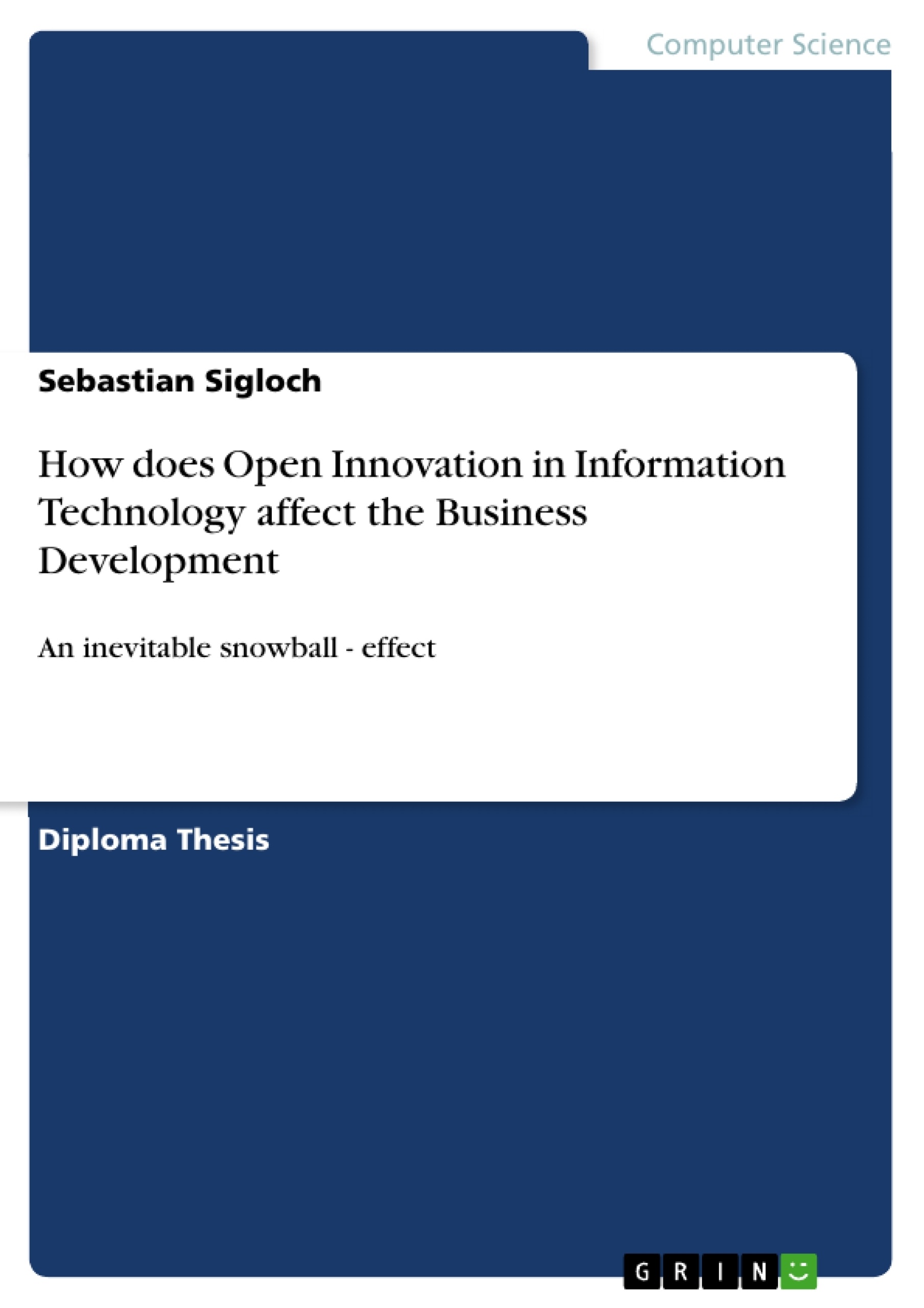The opening - up of the innovation processes within organizations is an important step in today's Research & Development in order to take advantage from both, external knowledge and ideas as strategic instruments. However there are no articles about the influences for implementation of Open Innovations into the Business Development. Therefore this dissertation should demonstrate the utilization of Open Innovations within the IT - Service field for both, the Research & Development and their assignment within the Business Development. Furthermore possible snowball - effects should be defined as well. The investigations showed up, that the implementation of Open Innovations have a major impact on the Business Development as well as the competitive advantage of an organization. With this dissertation the reader obtain an overview over the relationship between Open Innovations and their strategically usage.
Inhaltsverzeichnis (Table of Contents)
- The Open Innovation - paradigm
- Early innovating and Research & Development changes
- The opening up and mutation of the traditional - paradigm culminating in the Open Innovation - paradigm
- Bringing Open Innovation to IT Services - the correct implementation of Open Innovation
- Examples of 'Outside in' and 'Inside out'
- Ways to use external knowledge and customers as value creators
- Affectation of Open Innovation to the Business Development
- Definition and Integration of the Business Development
- Definition of the Business Development
- Open Innovation in the New Product Development
- The Evolution of Research & Development
- The trend of the new product development
- Open Innovation for getting New Customers / Clients
- Relationship of Open Innovation and the Business Development, a survey shows the implementation in practice
- The aim of the survey
- The samples of the survey
- Usage of Open Innovation within the Business Development
- Competitive Advantage due to the implementation of Open Innovation
- A cul-de-sac of costs and competitive advantage - How Open Innovation cause two snowball - effects
- Explanation of the snowball - effect
- Possible snowball - effects due to the implementation of Open Innovation within the Business Development
- A cul-de-sac of costs
- Competitive Advantage and effects on competitors
Zielsetzung und Themenschwerpunkte (Objectives and Key Themes)
This thesis investigates the impact of Open Innovation in Information Technology (IT) on business development. It aims to demonstrate the utilization of Open Innovation in the IT service field for both Research & Development and its application in strategic business development. The thesis also examines possible "snowball effects" that may arise from implementing Open Innovation. Key themes explored in the thesis include:- The evolution and application of Open Innovation in IT Services
- The relationship between Open Innovation and business development
- The impact of Open Innovation on competitive advantage
- The potential "snowball effects" of implementing Open Innovation
- Real-world examples of Open Innovation implementation in the IT service industry
Zusammenfassung der Kapitel (Chapter Summaries)
The Open Innovation - paradigm
This chapter explores the concept of Open Innovation, tracing its evolution from early innovation practices to the modern paradigm. It discusses the shift from traditional closed innovation models to the open approach, highlighting the benefits of collaborating with external stakeholders, leveraging external knowledge, and engaging customers in the innovation process.Affectation of Open Innovation to the Business Development
This chapter delves into the relationship between Open Innovation and business development. It defines business development, highlighting its role in achieving organizational growth and achieving strategic objectives. The chapter explores how Open Innovation can be integrated into business development strategies, specifically focusing on its application in new product development and acquiring new customers.A cul-de-sac of costs and competitive advantage - How Open Innovation cause two snowball - effects
This chapter examines the potential "snowball effects" of implementing Open Innovation within the business development process. It discusses both the positive and negative consequences, analyzing how Open Innovation can lead to increased costs and also enhance competitive advantage.Schlüsselwörter (Keywords)
Open Innovation, Information Technology (IT), Business Development, New Product Development, Competitive Advantage, Snowball Effect, IT Services, Research & Development, Customer Engagement, External Knowledge, Strategic Implementation.- Quote paper
- Sebastian Sigloch (Author), 2011, How does Open Innovation in Information Technology affect the Business Development, Munich, GRIN Verlag, https://www.grin.com/document/184981



